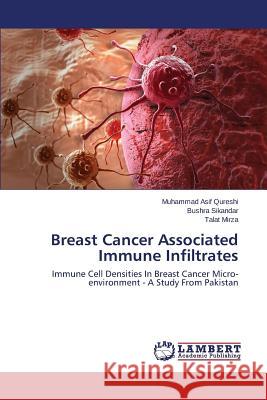Breast Cancer Associated Immune Infiltrates » książka
Breast Cancer Associated Immune Infiltrates
ISBN-13: 9783659780875 / Angielski / Miękka / 2015 / 148 str.
Breast cancer could be a potential target for immunotherapy. However, exact mechanistic links between breast cancer infiltrating immune cells (and the associated inflammation) and carcinogenesis are largely un-addressed. Although several researchers across the globe are investigating breast cancer associated immune cell densities, it is important to delineate/characterize immune cell densities in our own population as HLA polymorphism could lead to different immune make up of the tumour micro-environment. Data presented in this book describe various immune cell densities in Breast Cancer micro-environment. These data could be exploited to further understand the underlying mechanisms of breast carcinogenesis as well as to identify novel therapeutic targets. Based on the findings presented in this book, further experiments could be designed to better understand the role of each immune infiltrate. In summary, we have characterized immune cell densities in breast cancer micro-environment in Pakistani patients. This could lay foundation for further experiments in order to identify molecules of diagnostic, therapeutic and prognostic significance.
Breast cancer could be a potential target for immunotherapy. However, exact mechanistic links between breast cancer infiltrating immune cells (and the associated inflammation) and carcinogenesis are largely un-addressed. Although several researchers across the globe are investigating breast cancer associated immune cell densities, it is important to delineate/characterize immune cell densities in our own population as HLA polymorphism could lead to different immune make up of the tumour micro-environment. Data presented in this book describe various immune cell densities in Breast Cancer micro-environment. These data could be exploited to further understand the underlying mechanisms of breast carcinogenesis as well as to identify novel therapeutic targets. Based on the findings presented in this book, further experiments could be designed to better understand the role of each immune infiltrate. In summary, we have characterized immune cell densities in breast cancer micro-environment in Pakistani patients. This could lay foundation for further experiments in order to identify molecules of diagnostic, therapeutic and prognostic significance.











